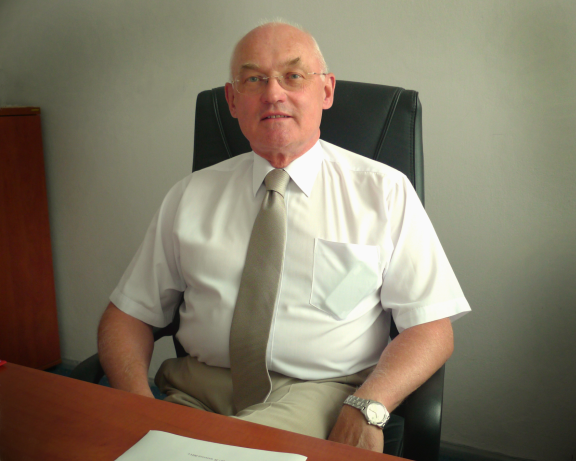Stanowisko: Profesor Uczelni do 2021 r.
E-Mail: andrzej.jodlowski@p.lodz.pl
Wykształcenie:
- Ukończona szkoła wyższa: Politechnika Łódzka, Wydział Budownictwa i Architektury, 1972, mgr inż.
- Uzyskany stopień naukowy doktora: Politechnika Warszawska, Wydział Inżynierii Sanitarnej i Wodnej, 1981
- Uzyskany stopień naukowy doktora habilitowanego: Politechnika Warszawska, Wydział Inżynierii Środowiska, 2002
- Tytuł rozprawy: „Wpływ utleniania chemicznego na skuteczność koagulacji glonów podczas uzdatniania wód”
- Uzyskane stanowisko profesora: Politechnika Częstochowska, Wydział Inżynierii i Ochrony Środowiska, 2003
- Uzyskane stanowisko profesora: Politechnika Łódzka, Wydział Budownictwa, Architektury i Inżynierii Środowiska, 2005
Wybrane publikacje:
Jodłowski A.: Effect of Pre-oxidation With Chlorine Dioxide on Algae Removal by Dissolved-Air Flotation. Environment Protection Engineering. Vol. 27, 2001, No 3-4, pp. 73-87.
The dissolved air flotation (DAF) experiments involving pre-oxidation of algae with chlorine dioxide and alum coagulation were carried out in a bench-scale unit under laboratory conditions. Such procedure allowed the removal of chosen green algae from water. The efficiency of the process under investigation was related to the parameters of algal particles agglomeration and separation. Destabilization of algal particles was necessary to provide favorable conditions for microalgae attachment to the collectors (air bubbles). The parameters of agglomeration can be itemized as follows: pre-oxidation oxidant (CLO2) and (alum) doses, pH, duration of mixing during flocculation. The parameters of separation comprise recycle ratio and saturation pressure. DAF allows collisions between the destabilized particles and air bubbles and simultaneously reduces flocculation periods. DAF preceded by pre-oxidation, alum coagulation and flocculation of algae produced clear water with low algal content at significantly limited coagulant doses.
Jodłowski A.: Effect of pre-oxidation on flocculated algal cells autoflotation. Environment Protection Engineering. Vol. 28, 2002, No 1, pp. 57-68.
Oxygen produced by algae can deteriorate their removal by conventional sedimentation process as result of algal agglomerates auto-flotation. Laboratory experiments were carried out to test the effect of water pre-oxidation on the improvement of algal removal by coagulation/flocculation process followed by sedimentation. The auto-flotation of algal agglomerates was reduced as a result of chlorine, chlorine dioxide and potassium permanganate application before alum introduction. The auto-flotation was partly reduced after pre-treating the algae with ozone and irradiating them with gamma rays. The chlorine demand (Cl.D.) of purified water, being used as a measure of water contamination with organics, was increased when hydrogen peroxide or gamma irradiation were used in the pre-oxidation step. That increase was due the reaction between hypochlorous acid and hydrogen peroxide remaining in the water after pre-oxidation.
Jodłowski A., Śmigielska K.: Zastosowanie szybkiego testu mikrokolumnowego do oceny wpływu naturalnych substancji organicznych na skuteczność usuwania zanieczyszczeń z wody na węglu aktywnym (Rapid small-scale column test used for assessing the effect of natural organic matter on the efficiency of pollutant removal from water on activated carbon. Ochrona Środowiska, 2007, 29(4): 23-27.
It has been demonstrated that the rapid small-scale column test (RSSCT) enables the sorptive properties of granular activated carbon (GAC) to be determined within a short time by measurements involving fine-grain beds and a high hydraulic load. The results of the RSSCT can be scaled up to predict the performance of GAC-filters under full-scale conditions. Examples are shown of the removal of organic matter (both natural and anthropogenic) during water treatment for the purpose of municipal supply, with sorption on a GAC bed as a unit process. The paper also specifies the design principles for the micro-columns, the testing conditions and the method of interpreting the test results obtained using column packed with fresh or partly exhausted GAC.
Jodłowski A., Piąstka W.: Badania stanu technicznego wybranych studni głębinowych wodociągu „Dąbrowa” (Assessing the condition of deep wells for Dabrowa Waterworks: A case study). Ochrona Środowiska. 2008, 30(3): 45-51.
The objects under study are eight Lower Cretaceous deep wells operated by the Dabrowa Waterworks, which is the part of the water supply system for the city of Lodz. The deep wells chosen were subjected to assessment of their technical condition, since their operation raised serious technological problems (e.g. due to silting-up, decline in yield, deterioration of water quality). Observations about the causes and frequency of failure, as well as the length of time when wells were not in service, were also scrutinized. Of the object chosen, the oldest Lower Cretaceous deep wells were found to be in the worst condition. This finding was not only substantiated by the analysis of changes in their operating parameters or in the quality of water being taken in, but was also confirmed by the video inspections of the well’s interior, which enabled the condition of the pipes and that of the filters to be examined. It was demonstrated that discontinuities in the operation of the wells occurs predominantly when the order was given to reduce water production in the Dabrowa Waterworks. Discontinuities by the failure of particular installations or distribution pipes, as well as the discontinuities resulting from power stoppage, are if minor importance but still require close examinations based on the reliability theory.
Jodłowski A., Gawarzyński J.: Ograniczanie strat wody w miejskiej sieci wodociągowej na przykładzie Tomaszowa Mazowieckiego (Water losses reduction in water distribution network of Tomaszów mazowiecki). INSTAL, 2011:6:51-55.
Assessment of water losses on distribution networks has been carried out using data collected by Water Company in Tomaszów Mazowiecki during 1988-2008. Percent water losses and daily water losses in relation to water distribution length have been calculated. Changes of the Infrastructure Leakage Index (ILI) have been also calculated on the basis of the procedure suggested by the International Water Association (IWA) It was stated that significant water losses took place as a result of modernization activities undertaken by Water Company in Tomaszów Mazowiecki. Percentage water losses decreased from 15 percent in 1993 to 8 percent in 2008. ILI values decreased from almost 10 in the beginning of nineties to about 1,8 in 2008.
